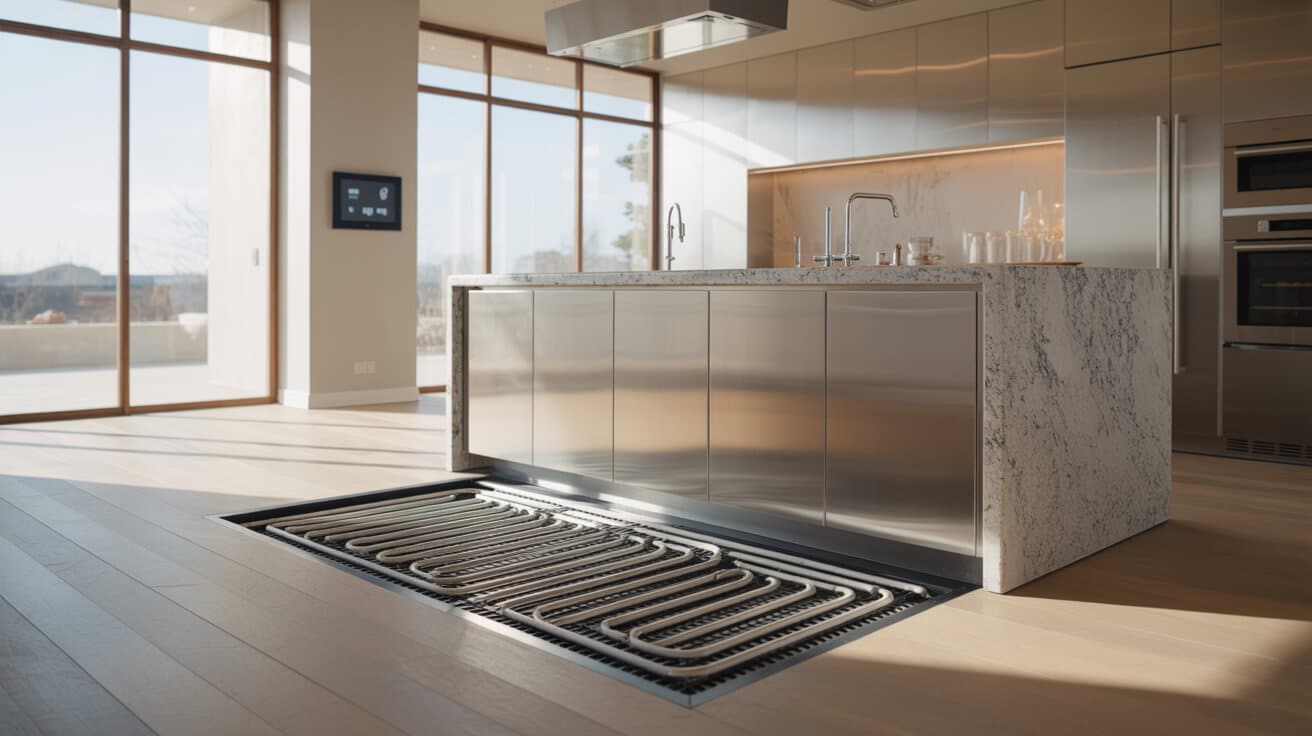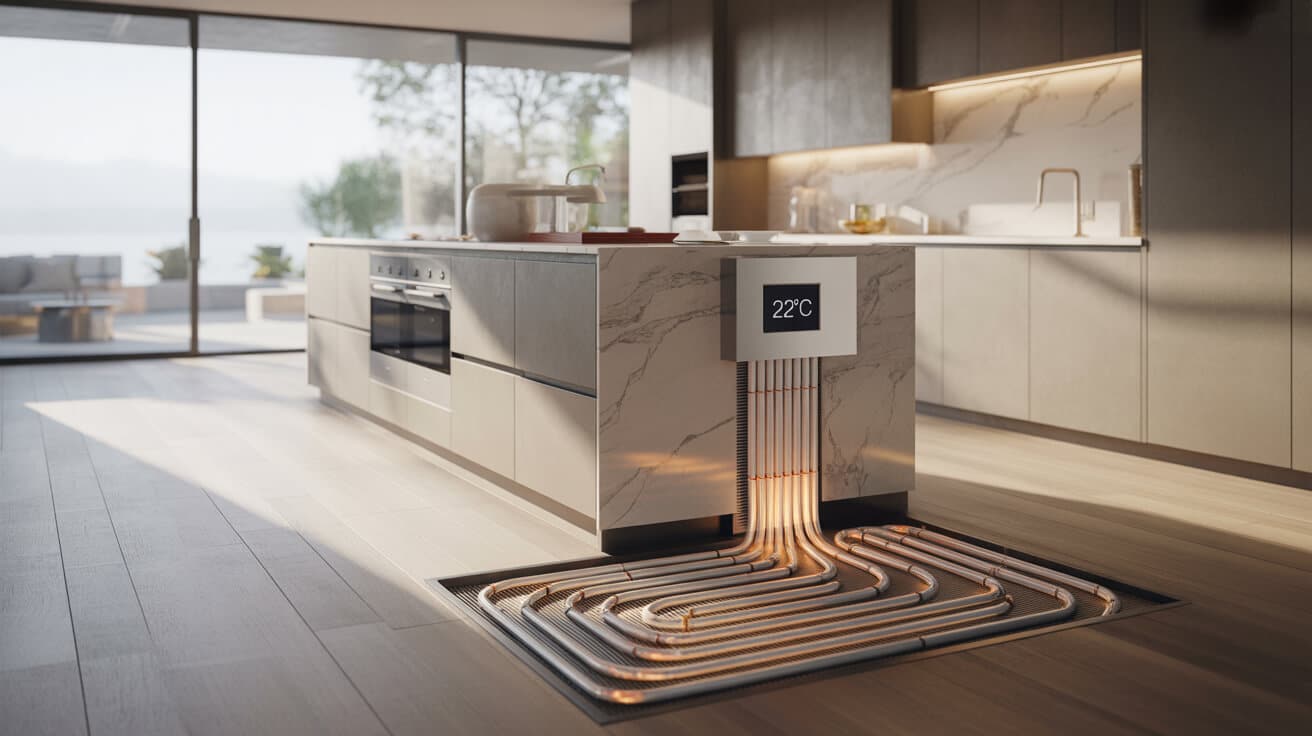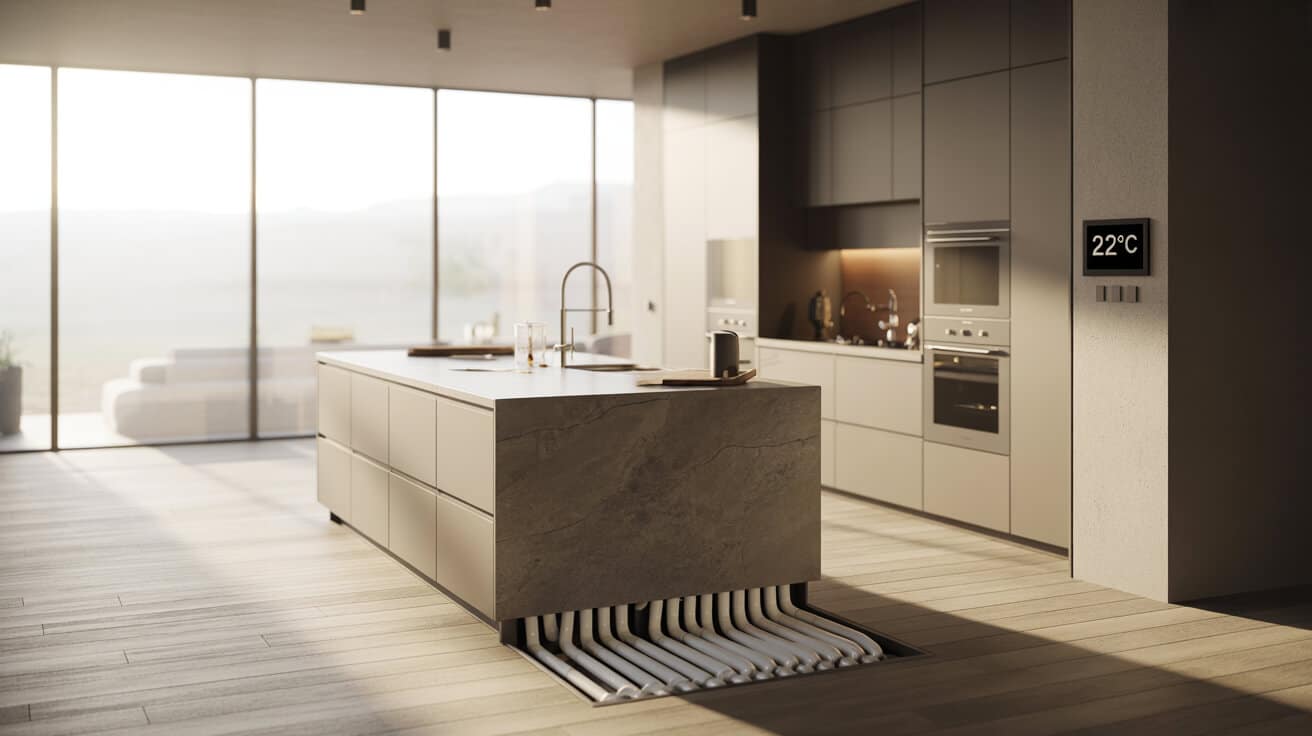Modern heating integration has evolved beyond the mere installation of renewable systems. Today, it encompasses rigorous planning, customised design, precise installation, and long-term aftercare. Property owners, landlords, and organisations now approach renewable heating as both a strategic investment in asset value and a pathway to regulatory compliance. Expertise provided by firms such as Plumbers 4U ensures your system is not only functional but also optimised for energy efficiency and lifecycle cost reduction. Diverse incentives and mandates drive the transition, but the true value of integration arises from its capacity to reshape your comfort experience, cut operational risk, and contribute meaningfully to environmental objectives.
Etymology or name origin
The expression “renewable heating” stems from the adoption of energy sources that are intrinsically sustainable—originating from the earth, sun, air, or organic materials—contrasted with conventional heating’s reliance on finite fossil fuels. Over recent decades, language has shifted from “green” or “alternative” heating to more legally defined terms such as “low-carbon” and “renewable.” The term “integration” signals a holistic approach in which component technologies, distribution systems, and smart controls are combined to operate as a cohesive thermal ecosystem within your property, reflecting the increasing sophistication and regulatory expectations of the industry.
Overview and context
Heating accounts for a significant portion of global residential and commercial energy use, making the decarbonization of space and water heating a central focus for climate and energy policy. National and regional authorities have adopted ambitious targets to reduce carbon dioxide emissions and improve the energy efficiency of your building stock. These requirements place intense focus on the role of plumbing and heating companies—notably those with proven credentials and regulatory expertise—in supporting owners and asset managers as you navigate compliance with obligations such as EPC (Energy Performance Certificate) improvement, Minimum Energy Efficiency Standards (MEES), and net-zero transition plans.
Economic volatility in fossil fuel markets, combined with heightened public awareness of environmental risk, drives your interest in alternatives that can deliver both immediate cost savings and long-term value protection. Integration projects are no longer confined to new builds; retrofits are surging as owners seek to future-proof legacy properties. The move toward renewable heating is also shaped by cultural and social factors, with increasing numbers of tenants, buyers, and businesses prioritising sustainability in their selection criteria.
History
Origins
Historically, renewable heating solutions were rooted in the use of biomass and passive solar techniques, reflecting pre-industrial traditions that leveraged readily available fuels or designed structures to maximise natural heat gain and retention. The transition to fossil fuels in the 19th and 20th centuries transformed the heating landscape, but innovation in renewable heating technology never fully faded.
Industrial emergence
The 20th century saw the introduction of early mechanical heat pumps for residential application, as well as advances in solar collector and hot water storage technologies. Government interventions during oil crises sparked renewed investment in research, with atmospheric CO₂ accumulation and energy independence emerging as prominent political concerns. The gradual refinement of building codes, driven by the EU and UK in particular, incentivized the development of more sophisticated and efficient renewable heating products, setting in motion the current standards-focused market structure.
Contemporary evolution
The 21st century has been characterised by rapid mainstreaming, with national incentives (such as the Renewable Heat Incentive and Boiler Upgrade Scheme), emissions targets, and consumer demand fueling widespread adoption. Digital control systems, smart diagnostics, and the professionalisation of installation and aftercare transformed integration from a niche offering into a strategic necessity for a wide variety of property types, from single-family dwellings to large commercial portfolios.

Core concepts and principles
Renewable heating systems
A renewable heating system is defined by its use of energy sources that replenish naturally on a human timescale, reducing or eliminating the use of non-renewable fossil fuels. Core technologies include air, ground, and water-source heat pumps, solar thermal collectors, modern biomass boilers, and combinations of these approaches.
Integration logic
Integration signifies more than connecting components; it focuses on ensuring that all parts—from the heat generator to radiators, underfloor manifolds, hot water cylinders, and digital controllers—operate harmoniously under real-world loads. This is achieved through:
- Careful system sizing and heat loss calculation based on property characteristics
- Selecting appropriate emitters (radiators, underfloor loops, fan coils)
- Designing control architectures (zone divisions, thermostat logic, weather compensation)
- Ensuring regulatory compliance (G3 for unvented cylinders, MCS for renewables, WRAS for potable water)
Lifecycle value
The principle of lifecycle value governs design, installation, and aftercare decisions. The goal is to optimise your comfort, safety, regulatory standing, and financial outcome over decades, taking into account maintenance cycles, servicing requirements, and the evolution of grid carbon intensity or future heating technologies.
Main technologies
Heat pumps
Air source
air source heat pumps (ASHPs) extract ambient energy from the outside air and upgrade it via compressor cycles into usable heat for your building. Modern models can deliver efficient output even at freezing temperatures, making them adaptable for most climates. ASHPs are frequently installed for both retrofits and new builds, valued for their lower upfront cost and simplicity of deployment.
Ground source
Ground Source Heat Pumps (GSHPs) draw heat from subsurface energy in the earth, using buried pipe arrays—either horizontal trenches or vertical boreholes. While installation is more invasive, GSHPs achieve higher average efficiency, making them attractive for properties with suitable land or higher continuous demand profiles.
Water source and hybrid
Water Source Heat Pumps use rivers, lakes, or subterranean aquifers as their energy reservoir. Hybrid pumps intelligently shift between renewable and legacy boilers according to external temperature and demand, maintaining consistent comfort while maximising your carbon reduction and efficiency.
Solar thermal systems
solar thermal systems deploy glazed or evacuated-tube collectors to capture solar irradiation, transferring energy into hot water cylinders via pumped glycol loops. These systems must be carefully matched to your domestic hot water demand and may require smart controls to prevent overheating or freezing. Integration with existing cylinders or the addition of twin-coil types is common; in multi-residential blocks, solar preheat is often combined with central plant heating or metered delivery arrangements.
Biomass boilers
Biomass boilers combust renewable organic matter, including wood pellets, chips, or logs. Automated feed hoppers, lambda (O₂-sensing) emissions control, and thermal storage (buffer tanks) are standard in quality installations. Special attention is warranted for:
- Emission standards and local air quality regulations
- Fuel supply agreements and certified product sources
- Flue/chimney design and ongoing maintenance
Hybrid and multi-technology systems
Advanced integration supports multiple heat sources, optimising performance through load-splitting logic, temperature sequencing, buffer storage, and smart control architectures. For example, a property may utilise solar thermal, an ASHP, and a gas boiler, with each system’s operation scheduled for optimal efficiency throughout varying seasons.
Integration with building systems
Heat emitters and hydraulic design
Heating systems perform most efficiently at lower circuit temperatures, favouring underfloor heating (UFH), low flow radiators, or oversized units for older building retrofits. Hydraulic separation, achieved via buffer stores, plate heat exchangers, and blending valves, isolates renewable generators from legacy appliances while maintaining pressure and flow consistency.
Control architectures
smart thermostats, weather compensation, open-protocol controls (such as OpenTherm), and remote app-based oversight allow precise temperature management for each room or zone. Digital zoning maximises user comfort and can be adapted to your household’s or tenant’s daily and seasonal routines.
Hot water integration and safety
The integration process addresses unvented hot water safety (G3), scald-risk mitigation via thermostatic mixing valves (TMVs), and Legionella management through periodic high-temperature cycles. Cylinder choices—direct, indirect, or twin-coil—reflect your simultaneous hot water and central heating demand and system source variety.
Backwards compatibility and retrofit considerations
Most legacy properties require at least partial upgrades (additional insulation, larger radiators, improved controls), electrical supply improvements, and a careful review of building fabric for condensation risk and heat loss. Companies such as Plumbers 4U provide expert guidance during the survey phase to anticipate and minimise disruption.
Implementation by service companies
Site survey and solution design
Implementation begins with a high-detail site inspection, reviewing your building’s orientation, fabric, existing heating infrastructure, and water supply quality. Digital design tools project load, efficiency, and grant eligibility outcomes.
Accredited installation
Professional plumbing and heating companies such as Plumbers 4U employ engineers with MCS (Microgeneration Certification Scheme), TrustMark, G3, and WRAS credentials. These professionals oversee:
- Sizing, specification, and load matching
- first fix (pipework routing, emitter fitting)
- Plant, buffer, and controls installation
- System water quality management
- Final commissioning and documentation
User handover and aftercare
On completion, you receive a tailored system logbook (operating instructions, warranty, maintenance schedule, digital interface guidance). Companies may offer annual checkups, Legionella risk audits, and remote troubleshooting. Comprehensive support ensures your heating investment continues to perform, maintaining compliance with evolving guidelines.

Policy, regulation, and compliance
Building and water regulations
Relevant UK Building Regulations include Part L (energy efficiency), Part G (hot water safety), Part J (combustion), and Part M (accessibility). WRAS-approved fittings verify potable water compatibility, while G3 directs safe unvented cylinder practice.
Installer certification and best-practice
Installers for grant-funded or legal compliance projects must hold appropriate accreditation (MCS, TrustMark, G3, or equivalent). Additional certifications may apply in communal, multi-dwelling, or high-rise settings, reflecting your project’s complexity and property type.
Incentive schemes
The Boiler Upgrade Scheme (BUS) and Energy Company Obligation phase 4 (ECO4) offer direct funding for heat pump and biomass installations meeting specified criteria. Properties subject to Minimum Energy Efficiency Standards (MEES) and Energy Performance Certificate (EPC) requirements rely on these schemes to offset capital expense and drive improvements.
Health and safety
Landlords, employers, and facilities managers bear statutory responsibility for Legionella mitigation, regular risk assessment, system maintenance, and certification audits. Insurer and mortgage compliance also depend on adherence to current guidance and assured installer competence.
Applications and domains
Residential retrofits and new builds
Owner-occupiers benefit from tailored system selection to suit usage profiles, layout, and existing property features. Enhanced controls enable your personalised comfort schedules with energy savings.
Rentals and multi-occupancy
Landlords, agents, and social housing managers require scalable systems capable of supporting predictable compliance, tenant satisfaction, and simplified asset documentation. Hot water metering, zone control, and communal plant integration are common.
Commercial and public estates
Facilities directors in commercial and public organisations focus on upgrades compatible with centralised plant, building management systems (BMS), and critical operational schedules, targeting energy cost reduction and corporate reporting advantages.
Asset value and energy performance
Improvement in EPC ratings translates into higher property value, accelerated mortgage or tenancy application, and reduced long-term risk of regulatory non-compliance.
Benefits
- Lower heating-related carbon emissions
- Potentially reduced operating costs due to increased system efficiency and off-peak energy use
- Eligibility for grant and incentive funding supporting your investment strategy
- Enhanced asset value and market differentiation
- Improved comfort control, resilience, and regulatory protection
- Adaptive compatibility with smart tariffs and energy management schemes
Challenges, barriers, and limitations
Upfront capital and funding
You may encounter higher initial costs than with like-for-like fossil fuel heating replacement. Effective funding strategies include sequential upgrades, leveraging incentive schemes, or phased installation across property portfolios.
Technical design and delivery
Legacy systems rarely match optimal heat distribution for renewables. Upgrades may require larger radiators, hydraulic separation, or electrical capacity enhancement. A detailed survey phase anticipates and budgets for such works.
Skills and workforce limitations
An ongoing shortage of accredited installers can create project delays, with implications for compliance deadlines and funding eligibility. Investment in skills and continuing professional development is a critical sector concern.
Controls and compatibility
Sensors, thermostats, and digital zoning must be carefully coordinated to avoid operational glitches. Software upgrades and firmware integration are increasingly a maintenance reality.
Compliance and reporting
Complex project documentation may burden landlords, agents, or directors unfamiliar with regulatory terminology. Trusted partners can help simplify your recordkeeping and audit delivery.
Performance metrics, data, and measurements
Key technical indicators
- Seasonal Performance Factor (SPF): Measurement of total useful heating delivered per unit electrical input over a heating season.
- Coefficient of Performance (COP): Instantaneous efficiency of heat pump or renewable device; generally ranges from 2.5–4.5 for modern installations.
- Carbon savings: Estimated by comparing your operational emissions to a fossil fuel system baseline; increasingly embedded in automated reporting tools.
Comparative benchmarks
| System Type | Typical Efficiency (%) | Carbon Savings (tCO₂/yr for Average Home) |
|---|---|---|
| Air Source Heat Pump | 250–350 (COP: 2.5–3.5) | 1.6–2.2 |
| Ground Source Heat Pump | 300–400 (COP: 3–4) | 1.8–2.5 |
| Solar Thermal (Hot Water) | 60–70 | 0.3–0.5 |
| Biomass Boiler | 80–90 | 1.8–3.0 |
Asset and financial impacts
- Payback periods generally ranges from 7–15 years under standard grant-assisted installations
- Increased Energy efficiency rating corresponds to improved asset value and reduced time-on-market for rental or sale
Common issues and troubleshooting
Integration and control faults
Improper sensor placement, software mismatches, or uncalibrated thermostats can cause uneven heat distribution or system inefficiency. Proactive installer maintenance and customer feedback loops are essential to catch and resolve these quickly.
Legionella and hot water
Lower operating temperatures in renewable systems can enable the growth of Legionella if not properly managed. Automated maintenance cycles (“pasteurisation” runs) and digital monitoring minimise this risk.
Maintenance and aftercare
Warranty validity depends on scheduled maintenance and documentation, particularly for grant-funded or regulated instals. Services by established companies—including Plumbers 4U—ensure your compliance, warranty retention, and peace of mind over the system’s economic life.
Accredited stakeholders and professional bodies
Professional accreditations
Installers holding MCS, G3, TrustMark, or WRAS certification demonstrate technical and compliance competence. These accreditations are often mandatory for funding eligibility and property surveys.
Regulatory and advisory bodies
- Ofgem: Regulator for energy markets, incentive eligibility
- EST (Energy Saving Trust): Guidance for home and business upgrades
- CIPHE (Chartered Institute of Plumbing & Heating Engineering): Professional training and standards
- APHC (Association of Plumbing & Heating Contractors): Contractor support, guidance, and policy feedback
Policy gatekeepers
Public bodies, local authorities, and funding administrators set and police standards; working with accredited contractors like Plumbers 4U aligns your project with current law and best practice.
Future directions, cultural relevance, and design discourse
Emerging technologies
Rapid development is expected in hybrid systems (PVT, heat batteries), digital controls (AI thermostat sequencing, fault prediction), and material science (advanced insulation, smart emitters).
Regulatory evolution
Zero-carbon policy is expected to infuse all new builds and trigger accelerated legacy upgrades; standards and available incentives will continue to shift as national targets are recalibrated.
Social perception and symbolic impact
Renewable heating is increasingly associated with responsible property stewardship, investment in comfort, and future readiness. “Net-zero” as a cultural value has moved from policy to popular consciousness, influencing not just your property choices, but your brand perception, recruitment, and social impact.
Sector dynamics
Continued convergence of IT, engineering, and regulatory expertise will define your strategic success. Companies like Plumbers 4U exemplify the new standard for comprehensive, compliant, and customer-centred renewable heating integration—offering your home or organisation transparent value at every stage of the lifecycle.

